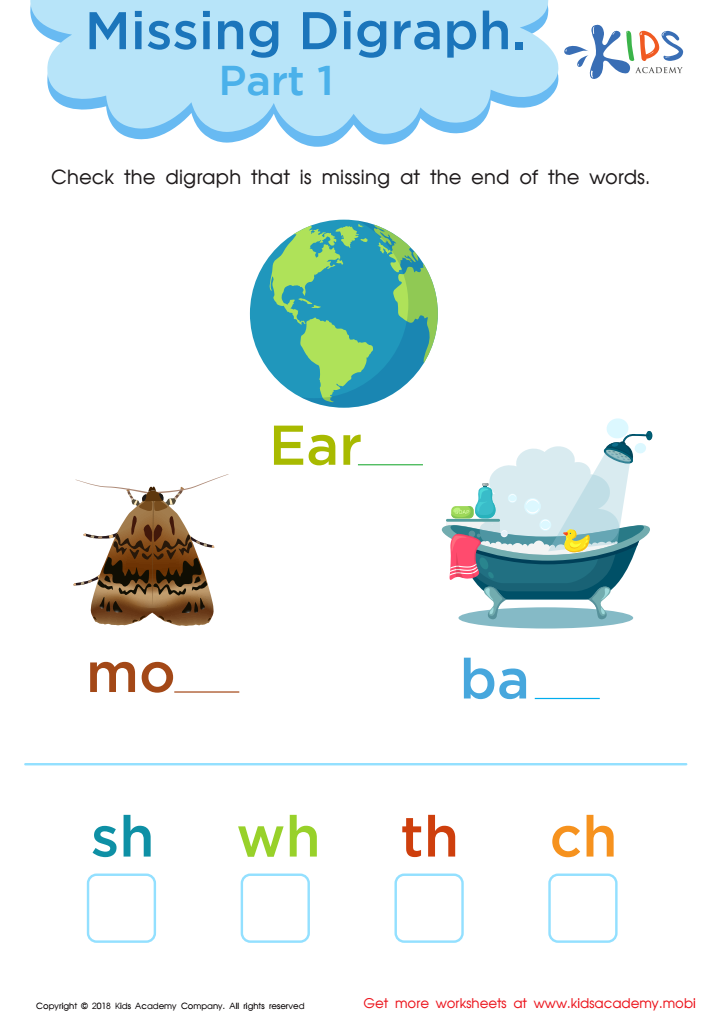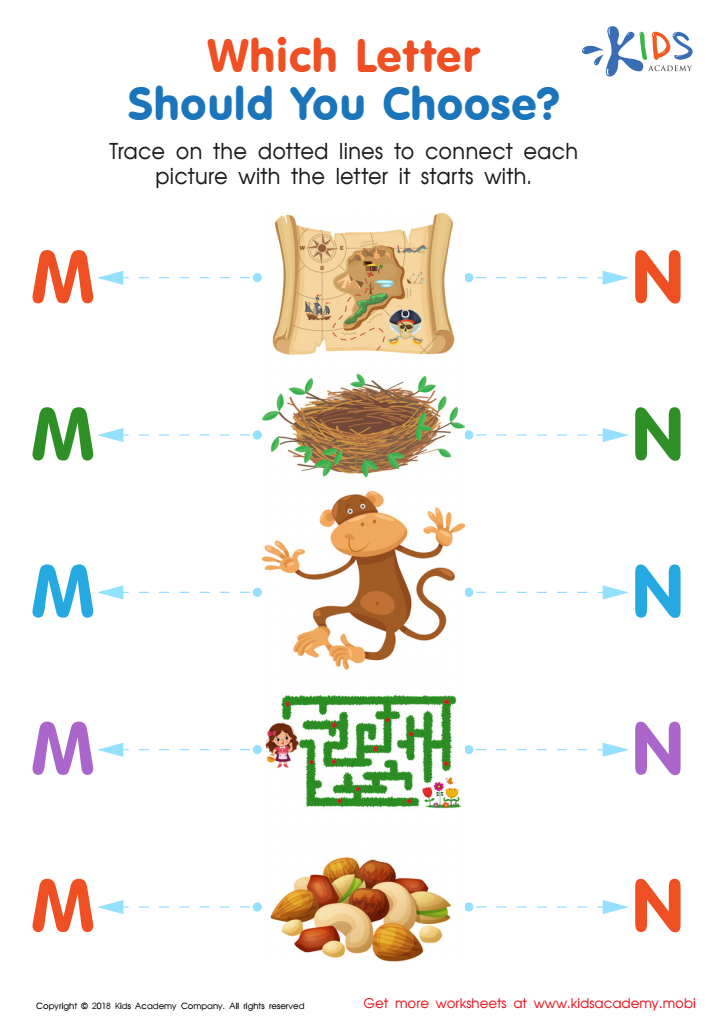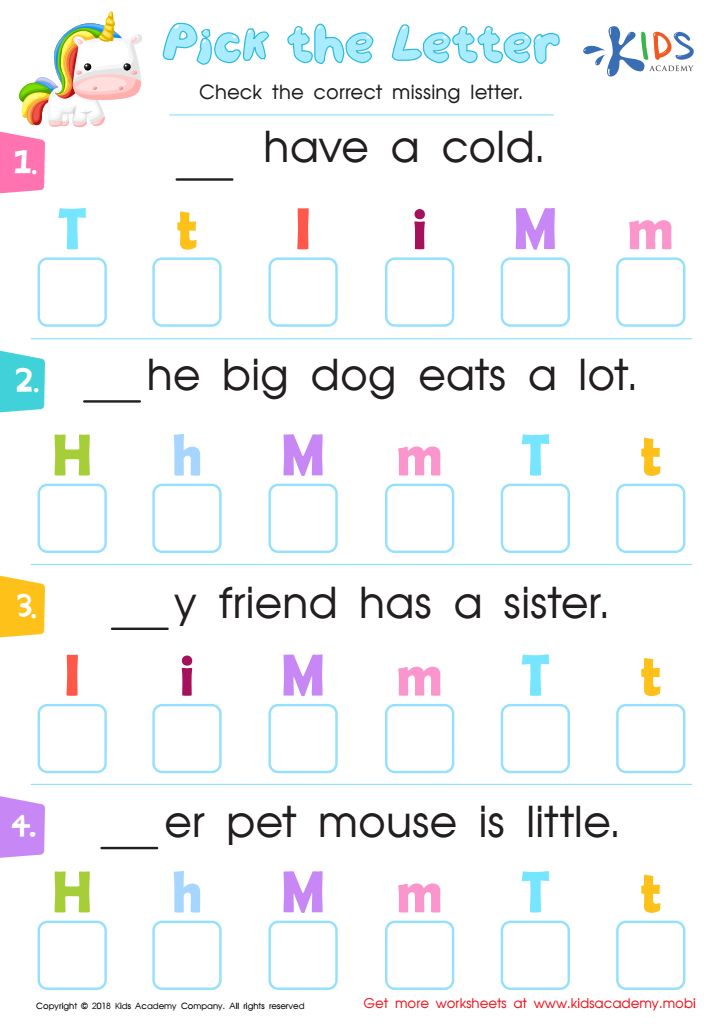Normal Missing Letters Worksheets for 6-Year-Olds
4 filtered results
-
From - To
Introducing our captivating Normal Missing Letters worksheets, meticulously curated for 6-Year-Olds! Designed with young learners in mind, these worksheets offer a harmonious blend of fun and education, perfectly tailored to foster the development of early literacy skills. Engaging and interactive, our collection challenges children to identify and fill in the missing letters, enhancing their understanding of the alphabet in a playful, supportive environment. Perfect for both classroom and at-home learning, our Normal Missing Letters worksheets for 6-Year-Olds are the ideal resource to ignite a love for reading and writing, setting a solid foundation for future academic success. Dive into a world of letters and unleash your child’s potential today!


Missing Digraph: Part 1 Worksheet


Which Letter Should you Choose? Worksheet


Pick the Letter Worksheet


Missing Digraph: Part 2 Worksheet
Normal Missing Letters worksheets are an invaluable tool for 6-year-olds as they embark on their reading and writing journey. These engaging worksheets are meticulously designed to cater to young learners, offering them a fun and interactive way to hone their skills. The primary objective of Normal Missing Letters worksheets is to reinforce letter recognition, a fundamental component of literacy development for 6-year-olds. By identifying and filling in the missing letters, children not only practice the alphabet but also improve their spelling and vocabulary.
Moreover, these worksheets serve as a stepping stone for young learners to understand the structure of words, which is crucial for reading fluency and comprehension. The challenge of figuring out missing letters encourages critical thinking and problem-solving skills, fostering a love for learning. For 6-year-olds, these activities are not just educational, but also offer a sense of accomplishment as they successfully complete each worksheet.
The simplicity and effectiveness of Normal Missing Letters worksheets make them an essential part of early childhood education. They provide a foundation that supports future academic success, making them a valuable resource for parents and educators seeking to enhance the learning experience for 6-year-olds. Through these worksheets, children can build a strong literacy base in an enjoyable and engaging manner, setting the stage for lifelong learning.

 Assign to My Students
Assign to My Students










